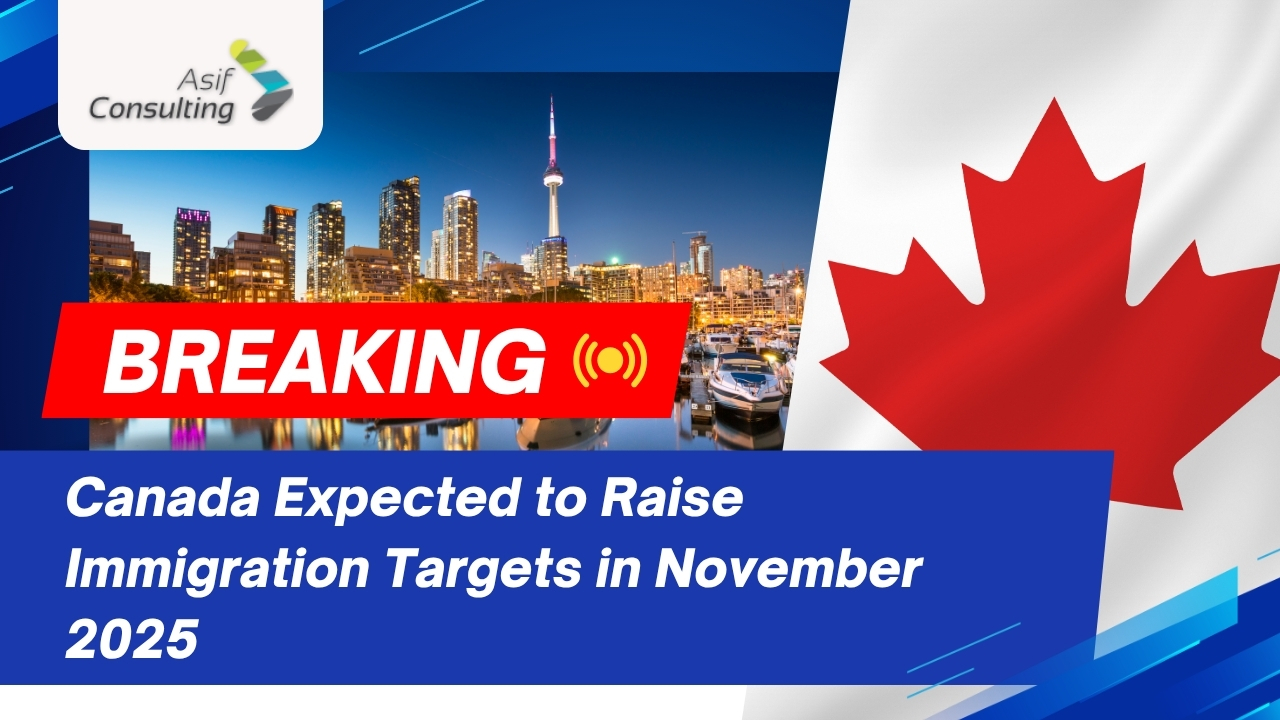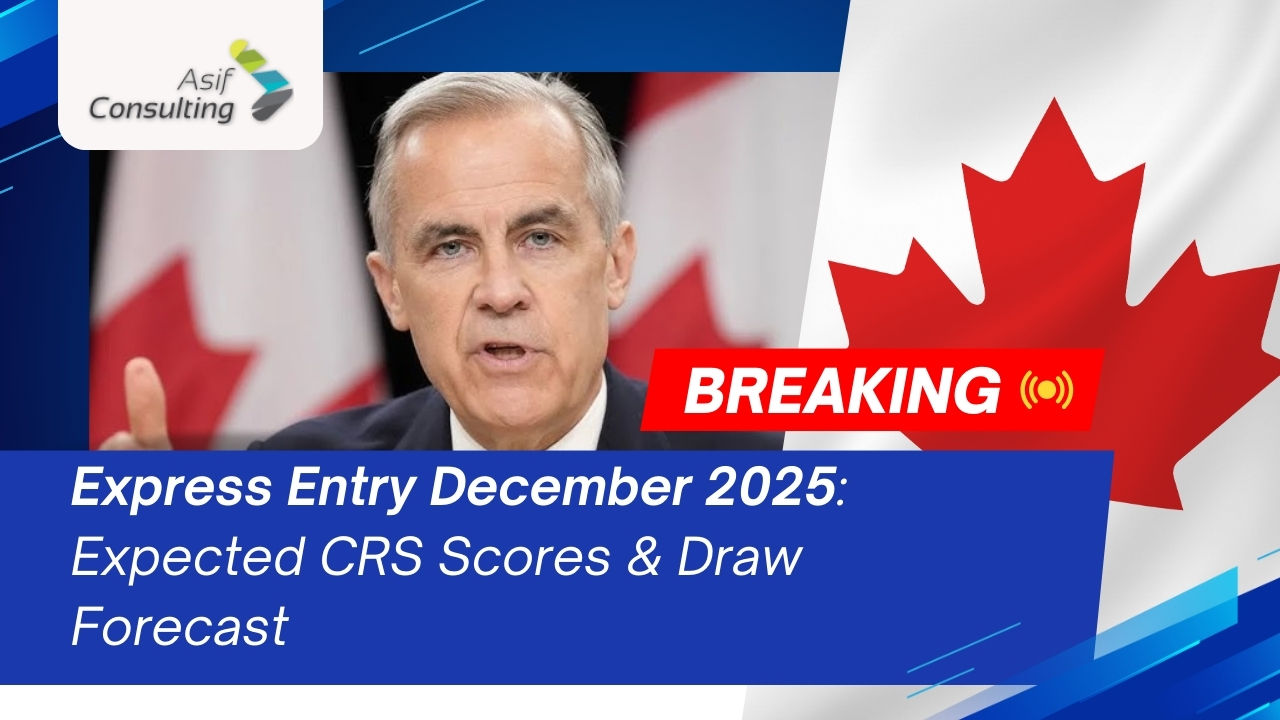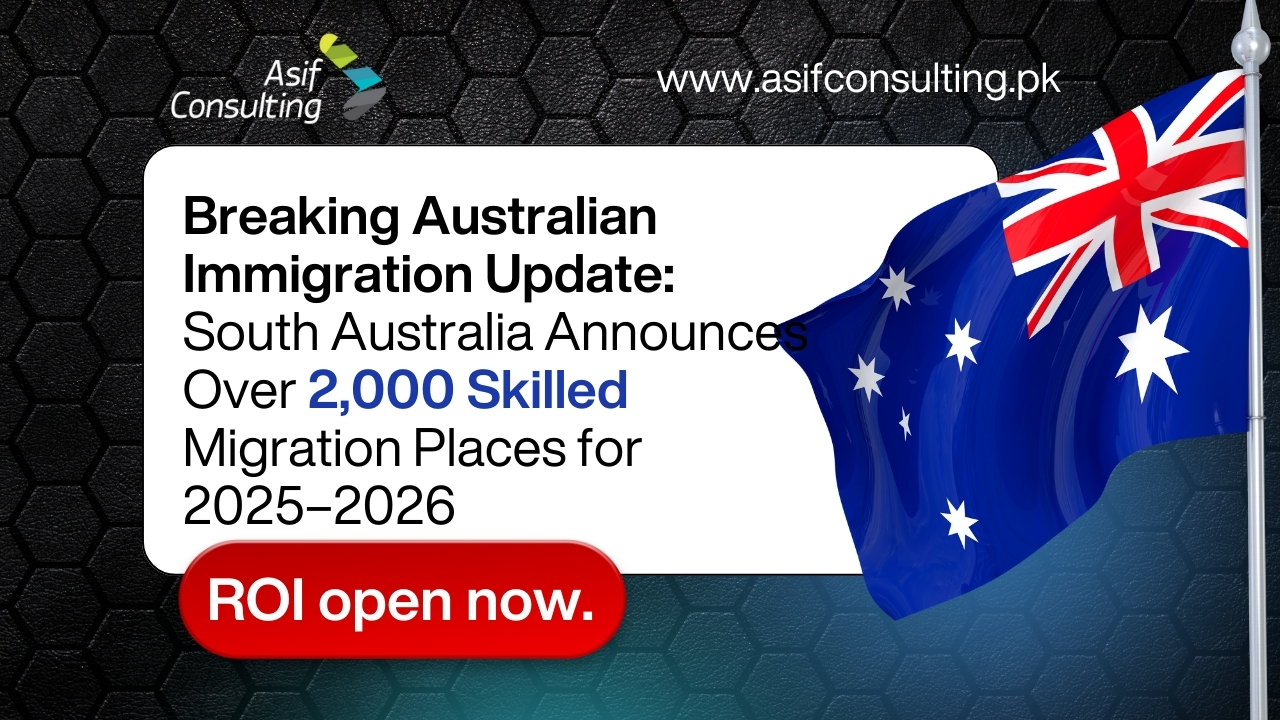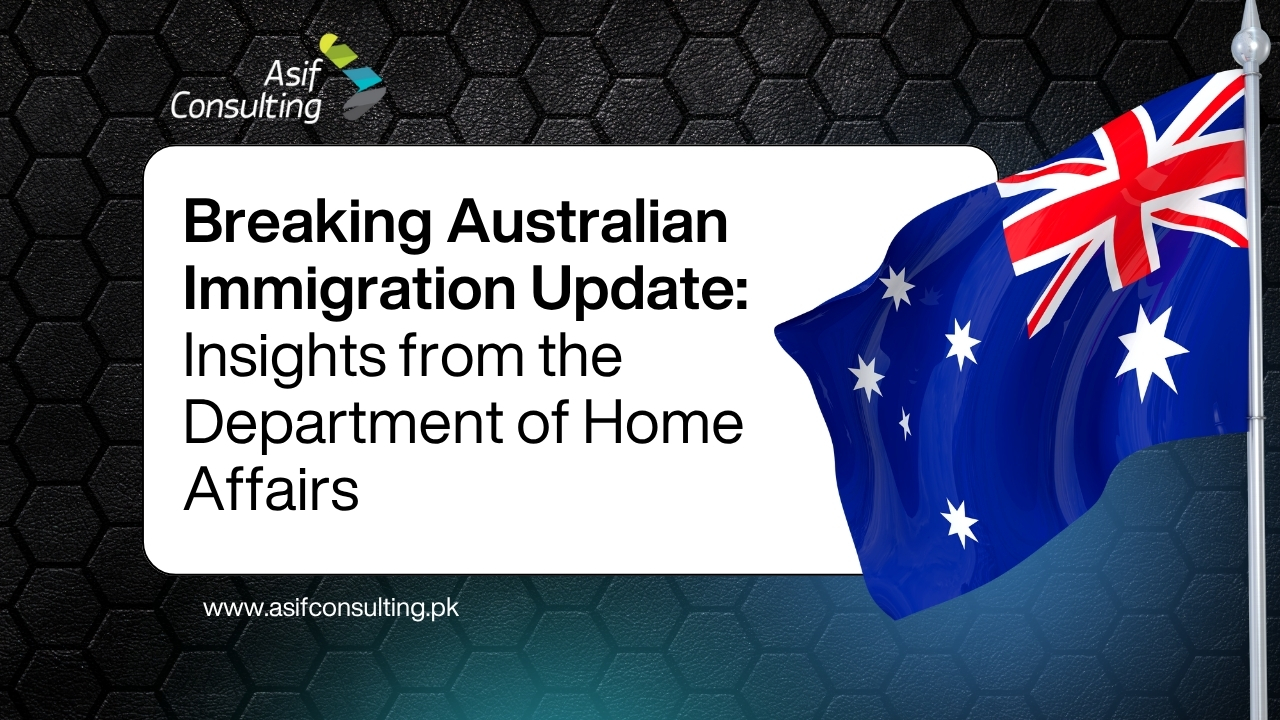Canada Expected to Raise Immigration Targets in November 2025
By Asif Consulting | October 9, 2025
Canada is expected to increase its immigration targets in the upcoming 2026–2028 Immigration Levels Plan, scheduled for announcement in November 2025, according to ongoing policy discussions and provincial feedback. The plan, which shapes the nation’s demographic and labour market growth, follows a series of consultations held earlier this year by Immigration, Refugees and Citizenship Canada (IRCC).
Current Immigration Targets for 2025
In the 2024–2026 Immigration Levels Plan, the federal government set the 2025 target for 395,000 permanent residents (PRs). However, after strong provincial demands, additional Provincial Nominee Program (PNP) allocations raised the adjusted target to 401,418.
Breakdown of added allocations:
- British Columbia: +1,254 PR spots
- Alberta: +1,528
- Saskatchewan: +1,136
- Newfoundland and Labrador: +1,000
- New Brunswick: +1,500
The Francophone immigration target outside Quebec stands at 8.5%, equating to 29,325 spots.
The Politics Behind the Numbers
Immigration remains a politically charged issue. The Liberal government has sought to balance economic growth with public concerns around housing, healthcare, and infrastructure strain.
After previously ambitious targets near 500,000 PRs annually, Ottawa opted for a moderated stance in 2024, aiming for sustainable growth while addressing public sentiment. Opposition parties, particularly the Conservatives, continue to link high immigration to pressures on housing and services, keeping immigration at the heart of national debate.
Reductions in Certain Immigration Streams
While provincial allocations have risen, several streams have seen cuts under the 2025 plan:
- Business Immigration: Reduced to around 2,000 spots.
- Family Sponsorships: Lowered from 118,000 to 94,500 (~22% of PR total).
- Atlantic Immigration Program (AIP): Reduced from 8,500 to about 5,000.
This reflects a federal shift toward economic-class immigration, prioritizing skilled workers over family and business programs.
Consultations for 2026–2028 Plan
Between July 21 and August 17, 2025, IRCC conducted consultations across provinces, industries, and settlement agencies. Key themes included:
- Stronger provincial control and tailored immigration strategies.
- Alignment with housing and infrastructure capacity.
- Clearer pathways for temporary-to-permanent residency.
- Growth in Francophone immigration outside Quebec, aiming for 12% by 2029.
These inputs will directly shape the upcoming immigration targets.
Why Provinces Are Pushing for More
Provinces argue that federal quotas do not adequately reflect their unique labour market needs.
- Alberta seeks more trades and energy-sector workers.
- Saskatchewan wants agricultural and resource-sector support.
- Atlantic provinces need population growth to sustain economies.
- Ontario and British Columbia face chronic shortages in healthcare, tech, and infrastructure roles.
Provinces also seek greater political visibility and claim that smaller communities can better integrate newcomers, improving long-term retention.
Forecast: 2026 Immigration Targets
The 2026 base target is currently 380,000, but adjustments and provincial allocations could push it up to 386,418 — or even 410,000–415,000, based on demographic and economic projections.
Given Canada’s population of 41.7 million, a 1% immigration rate (416,958 PRs) is seen as the benchmark for sustainable growth.
The Francophone immigration share is expected to rise to 9.5% (31,350 PRs) in 2026.
Reasons for an Expected Increase
Several factors suggest an upward revision:
- Aging population and low birth rate driving labour dependency.
- Severe skill shortages in healthcare, construction, tech, and agriculture.
- Provincial pressure to secure higher quotas.
- Commitment to Francophone immigration goals.
- Unmet demand from temporary residents and international students seeking permanent status.
Analysts believe that 385,000 PRs will be the minimum, with the actual figure likely above 410,000.
Timeline of Recent Immigration Targets
| Year | Announced Target | Adjusted Target | Francophone Share (outside Quebec) | Notes |
| 2024 | 485,000 | 485,000 | ~26,100 | High-growth baseline year |
| 2025 | 395,000 | 401,418 | 29,325 (8.5%) | Provincial boosts applied |
| 2026 | 380,000 | 386,418–410,000+ | 31,350 (9.5%) | Expected upward revision |
| 2027 | 365,000 | TBD (>400,000) | 31,500 (10%) | To be finalized in new plan |
Temporary Immigration: Adjustments and Challenges
Canada has also started managing temporary immigration targets—covering international students and temporary foreign workers—to better control population inflows.
- 2025: 673,650 new temporary residents
- 2026: 516,600
- 2027: 543,600
By 2027, Ottawa aims to reduce non-permanent residents (NPRs) to under 5% of the national population.
However, tighter student quotas have caused financial strain at institutions like Humber College and Conestoga College, leading to calls for more flexible policies. Analysts estimate potential annual revenue losses near $10 billion due to decreased international student numbers.
What to Expect in November 2025
The November 2025 announcement will outline the new 2026–2028 Immigration Levels Plan. Experts predict:
- PR targets to increase toward 410,000–415,000.
- Higher Francophone immigration quotas (9.5% in 2026, 12% by 2029).
- Expanded Provincial Nominee Programs (PNPs).
- Streamlined temporary-to-permanent pathways for students and workers.
- Potential further cuts in family and business categories to balance growth.
In short, while the government may adjust the mix, Canada is not expected to reduce immigration levels. Instead, the 2025 plan will aim for higher, smarter, and more regionally balanced immigration, ensuring that both Ottawa and provinces share responsibility in meeting the country’s demographic and economic goals. Contact Asif Consulting for further assistance.






